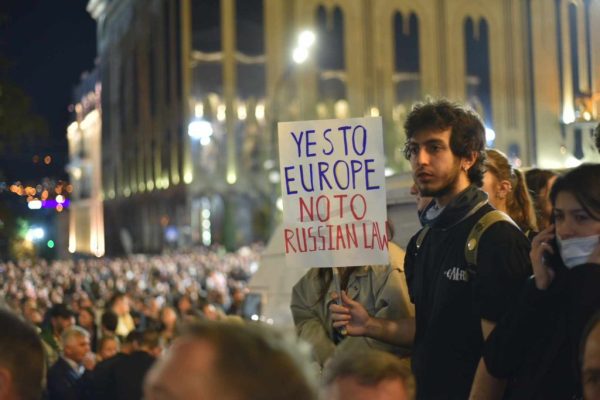When discussing the European Union’s handling (or mishandling) of the COVID-19 crisis, the first image that comes to mind is probably that of the newly closed internal borders as well as the attendant human, economic, and geopolitical costs. But the longer-term implications go deeper.
The three key EU institutions are, ranked by their clout, the Council (which represents member states), the Commission (the EU’s civil service), and the Parliament. Curiously, the least muscular of the three seems to have reacted the soonest, perhaps because its members travel more than decision-makers in the other institutions. The Parliament’s Secretary-General, Klaus Welle, started to curb travel even before the coronavirus appeared in Belgium.
The Commission was initially slower to act but has shown a remarkable strategic depth. Its president, Ursula von der Leyen, believes in the EU acting strategically and works hard to live up to this vision. Communicating promptly and forcefully, she led the charge in introducing public safety measures as well as in mitigating the economic impact of the crisis, among others by proposing “coronabonds”—novel common debt instruments to raise money to cushion the economic shock. Long supported by Italy, these are opposed by thrifty northern European members of the eurozone, including her native Germany.
Realizing that the crisis will weaken many companies, she also called for the EU to take the lead in protecting strategic assets from foreign takeover. That was a welcome note of leadership.
The European Council has focused on economic measures. Together with Christine Lagard, president of the European Central Bank, the members of the eurozone initially proposed a fiscal stimulus package amounting to about 1% of combined GDP for 2020 and liquidity facilities of a minimum of 10% of GDP via public guarantee schemes and deferred tax payments. These moves are welcome but will have to increase significantly as the economic impact of the pandemic unravels.
The main lesson so far, however, is that member states jump back to national-level decision making in times of crisis. The knee-jerk reaction in countries such as France, Germany, and the Czech Republic was to limit or stop the export of medical supplies. Though European treaties do contain a limited provision for coordinated action on “serious cross border health threats” health is a member-state competence, not an EU one. Unfortunately, pathogens are uninterested in such distinctions.
The European Center for Disease Prevention and Control (ECDC) connects the health agencies of its members and operates an early warning and response system. But it suffers from several major flaws. The center includes Iceland, Liechtenstein, and Norway but excludes Switzerland and (a Brexit casualty) the UK. Information and data sharing are only available obviously, for member states. The ECDC’s annual budget is only $66m level; it has a staff of 300. For an organization designed to deal with Europe-wide pandemics, this is precious little.
The crisis has highlighted the need for an effective EU-wide health authority. Much stronger coordination will be needed, from prompt data sharing to the common acquisition of personal protective equipment, medicines, and vaccines. Parallel to enhancing the ECDC’s potential, more authority has to be given to the EP’s Health Security Committee as well as a European Crisis Management Center, to bring them out of invisibility into impact. In a future pandemic, for example, a cross-continent approach would likely feature controls not at internal national borders, but around cities which are affected by outbreaks, and perhaps the closure of the common external border. It would also involve medical support for its member states and the immediate neighborhood.
Absent concrete and immediate EU support, China enjoys the limelight. Until a few weeks ago, it would have been hard to imagine a message or diplomatic move that could have made Chinese investments emotionally attractive and likable in significant parts of Europe. (Though the distribution of favors is patchy: despite Victor Orbán’s loudly pursued “Eastern opening” Hungary has received less Chinese support than the Czech Republic and even Slovakia.)
China’s energetic charm offensive is coupled with an unprecedented, Russian-style disinformation blitz. So far, it is working—but it is also sounding alarm bells in Brussels. The 27 EU members have found it hard to develop, let alone pursue, a common China strategy until now. The pandemic may make it easier.
In short, the real challenge brought by the coronavirus to Europe is not to the healthcare system. It is whether Europe can generate trust, uphold its values, and bolster cooperation. So far, that is a worryingly open question.
Common Crisis is a CEPA analytical series on the implications of COVID-19 for the transatlantic relationship. All opinions are those of the author and do not necessarily represent the position or views of the institutions they represent or the Center for European Policy Analysis.
Europe’s Edge is CEPA’s online journal covering critical topics on the foreign policy docket across Europe and North America. All opinions are those of the author and do not necessarily represent the position or views of the institutions they represent or the Center for European Policy Analysis.





